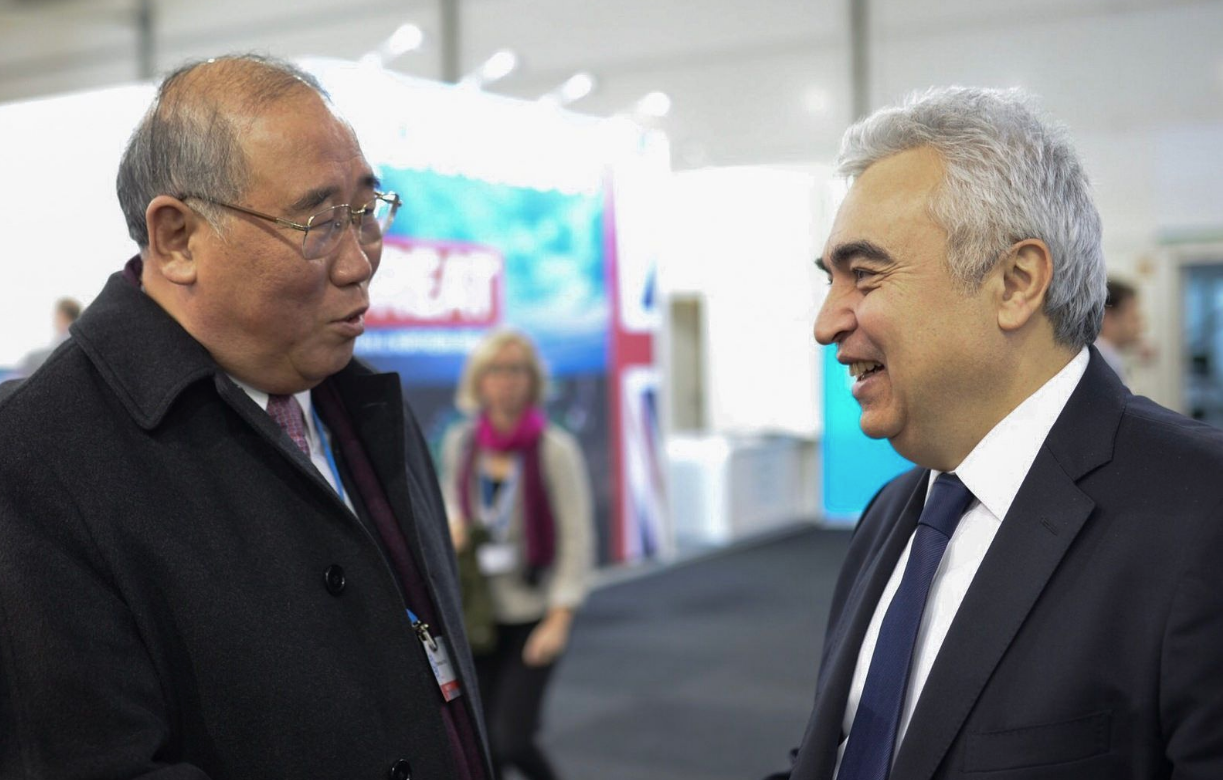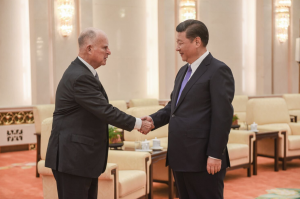The cost of renewable energy is tumbling thanks to strong investment from China and India, according to new findings from the International Energy Agency (IEA).
At the same time, the United States has consolidated its place as the top oil and gas producer, and is replacing Russia as leader of these polluting sectors as the country also rolls back hard-won green policies dating from the Obama era.
The 2017 World Energy Outlook shows that China is shifting decisively away from coal, guided by long-term economic policies to support sustainable growth, clean air and a political vision of a “beautiful China”.
For the first time the IEA added a section on China’s new phase of development to its annual report. At the Chinese Communist Party Congress in October, President Xi Jinping restated a commitment to “return to blue skies”, which involves restructuring the national energy system in accordance with the vision of an “ecological civilisation” – a political slogan that refers to development in harmony with nature.
Leading future energy markets also aligns with Xi Jinping’s vision of a new world trade order that has Asia at the centre, which he expressed at the Davos Forum in Switzerland earlier this year.
“China’s choices will play a huge role in determining global trends, and could spark a faster clean energy transition. The scale of China’s clean energy deployment, technology exports and outward investment makes it a key determinant of momentum behind the low-carbon transition,” said the report.
The report said that the United States is already the undisputed global leader in oil and gas production, with further growth expected.
“In the next ten years, 80% of global oil production growth will come from US, more than Russia which has been historically the world’s largest producer,” said Dr Fatih Birol, IEA executive director, at a press conference in Bonn. He cautioned that current and planned policies will be insufficient to avoid the severe impacts of climate change.
China in focus
The IEA’s latest report was published at the United Nations Climate Conference in Bonn, just two days after a separate report from the Global Carbon Project claimed that China’s carbon emissions are forecast to rise by 3.5% in 2017, following three years of flat growth.
However, the IEA report claims that coal usage, which is the principal source of emissions in China, is trending downwards.
“China’s coal consumption is declining, not just slowing. The government is shutting down inefficient coal plants and primitive coal mines. This, I believe, is done for air pollution reasons rather than climate reasons,” said Dr Birol.
By 2040, it is forecast that China will add electricity generation capacity equivalent to the entire US power system. The IEA expects China’s coal consumption to peak in the next few years and fall by 15% by 2040, based on current policies. China is also expected to account for more than 40% of global investment in electric vehicles.
Coal is being replaced by renewables, gas and nuclear. One-third of the world’s new wind power and solar PV is installed in China, and almost two thirds of nuclear plants under construction. The country is also investing heavily in natural gas.

The solar transition
In 2016, around half of all new power plants were solar, dwarfing growth in other energy sources by some margin, and driven by falling costs.
“The price of solar PV has halved in the last three years. I don’t know any other good; bread, milk, gasoline, that a price has halved in that time. And we expect solar to half again in the next three years,” Dr Birol told chinadialogue.
“This rapid fall in solar prices challenges the assumption that developing countries must go for coal as a more affordable option,” he said.
Indian policies bear fruit
“In India and other parts of South Asia we are seeing tremendously positive progress. India has taken to major policies that the [Narendra] Modi government is pushing, bringing electricity to people in a short space of time. In eight years India will bring electricity to 300 million people. This is a huge success,” said Dr Birol.
However, he noted that India, South East Asia and sub-Saharan Africa still have much to do to increase energy access.
“Over the next 20 years India is expected to add power generation capacity equivalent to what Europe has today. While in sub-Saharan Africa, the IEA sees no declining trend on energy access. It is important that governments, therefore, make the most out of the declining cost of renewables,” said Dr Birol.
He added: “Going forward, India’s major challenge will be to match solar energy supply with times of peak demand in the evening when people return home from work. New innovation around battery storage will be key to solving this problem.”
Africa – greatest renewable potential
The continent that most urgently need to improve energy access is Africa, where two out of three people are without electricity.
Dr Birol highlighted the huge potential for hydropower in Africa while at the same time warning that damming up rivers can damage biodiversity and human settlements downstream.









